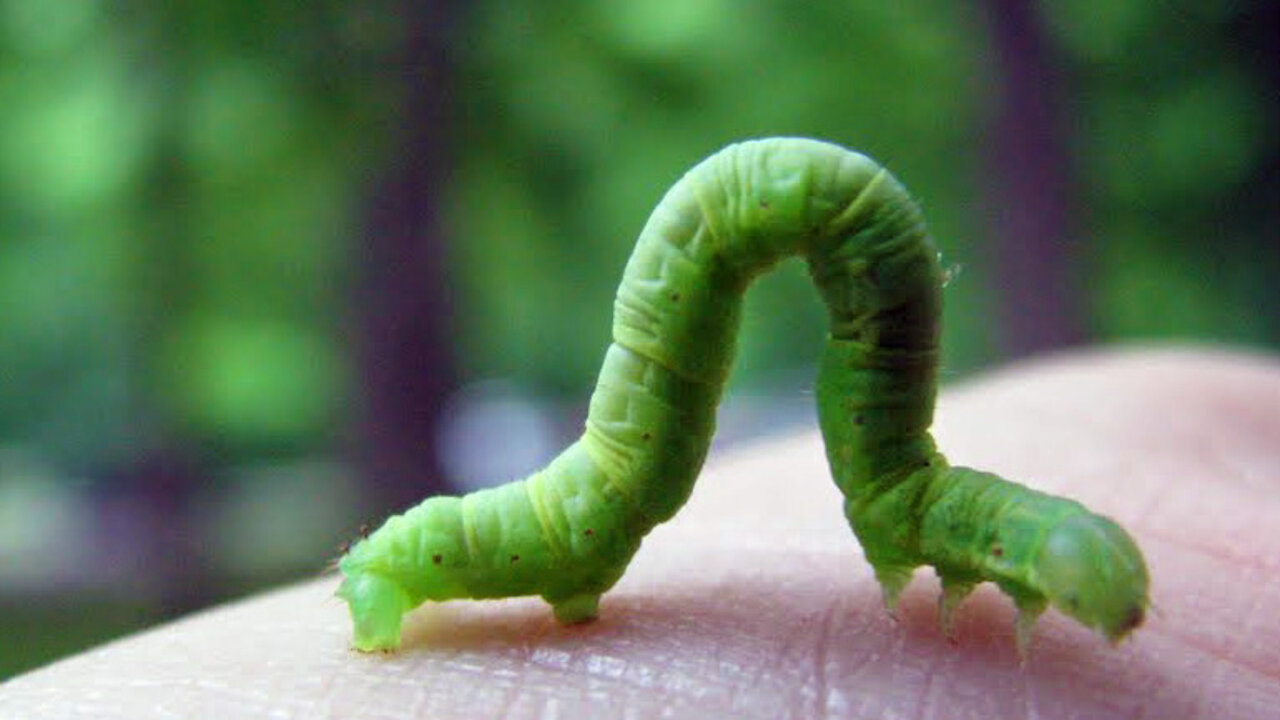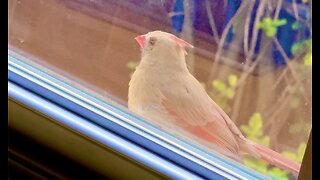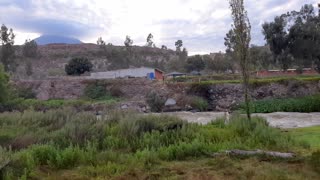Premium Only Content

Inchworm inching his way along
It’s June, it’s the Canadian countryside, there are leaves, therefore there are inch worms. In a certain mood, they can be entertaining to watch, as they, literally, inch their way along.
Inchworms are actually caterpillars that belong to a family of moths with over 1,200 species native to North America. Depending on the species, they can be pale green like this one, or reddish-green, dark brown or even black.
Inchworms have three pairs of “true legs” at the front of their bodies, and two or three pairs of prolegs (appendages extending from the abdomen) at the rear. They have no appendages at the middle, and move by drawing their rear ends forward while extending their front section and holding on with their prolegs.
An inchworm’s body is smooth and hairless, and many species have projections on their bodies that help them mimic flowers, twigs or foliage. When in danger, some inchworms stand upright and still on their prolegs, making them appear like a twig.
Inch worms feed on several types of trees, plants and shrubs. Some species feed exclusively on deciduous trees and shrubs, some feed only on conifers, and some feed on both.
Only one generation of inch worms is born every year. Adult moths lay their eggs in the winter, leaving them on twigs and tree limbs in clusters of 50 or more. After the eggs hatch in April or early May, the caterpillars feed for four or five weeks. When they mature, they burrow into the soil and make cocoons of silk and dirt particles near the soil’s surface. They pupate in early June, but do not emerge as moths until November, when they surface to lay eggs. The adult female moth is wingless; the adult male has a wingspan of about 1 inch.
-
 0:04
0:04
AmplifiedLIFE
10 months ago $0.03 earned“Peep”-ing & Chirping Cardinal
115 -
 0:36
0:36
mikeyRomero
3 years agoAlong the way...
11 -
 1:00
1:00
Charxime
3 years agoAlong the way walking
19 -
 0:43
0:43
davidblawson
3 years ago $0.01 earnedSing Along Dog
731 -
 0:19
0:19
WSYM
3 years agoAlong the way she's raising money
12 -
 0:19
0:19
mikeyRomero
3 years ago $0.06 earnedAlong the way in Presidio Park
73 -
 4:01
4:01
JSCAMERON
4 years agoALL ALONG THE WAY
15 -

Flyover Conservatives
1 day agoThe Great Gold Cover-Up: Is Fort Knox EMPTY?! - Clay Clark + Dr. Kirk Elliott | FOC Show
43.3K14 -
 1:24:40
1:24:40
Kim Iversen
9 hours agoJeffrey Sachs Just Exposed the Truth They Don’t Want You to Hear
58.8K39 -
 2:11:32
2:11:32
Glenn Greenwald
7 hours agoGlenn From Moscow: Russia Reacts to Trump; Michael Tracey Debates Ukraine War | SYSTEM UPDATE #413
53.2K74